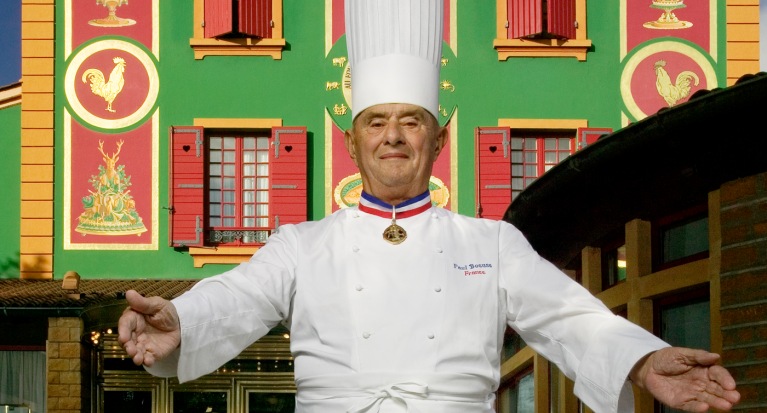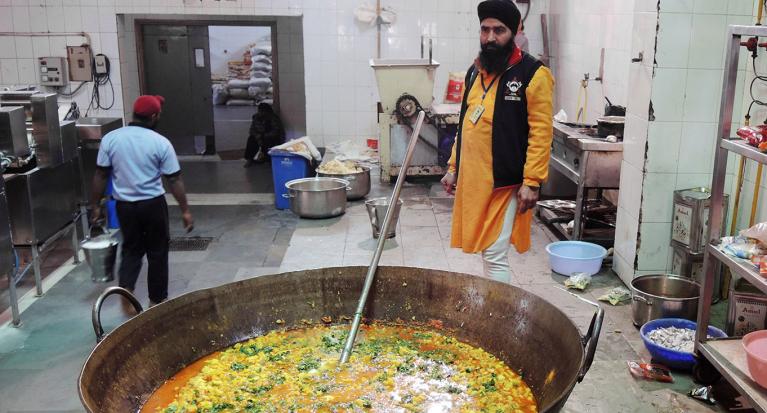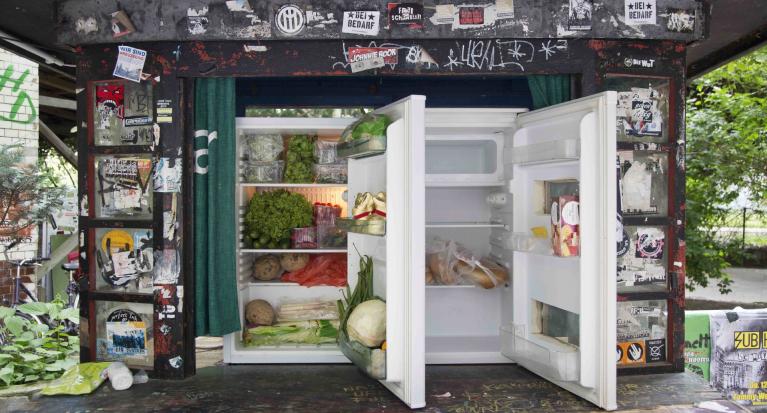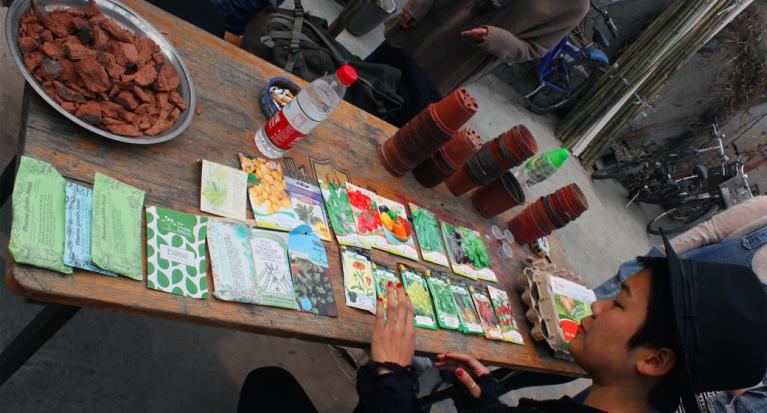Boston’s neighbourhood gardens
How community gardens evolved in one U.S. city.
© Boston Urban Gardeners
The movement that created most of the 175 community gardens in Boston today began in the turbulent 1970s. At that time many U.S. cities were undergoing major social and economic changes, and Boston was no exception. The Boston busing crisis generated ugly racial tension in parts of Boston. At the same time, the sharp rise in prices for oil elevated the cost of groceries. Against this backdrop, Boston’s community gardening movement brought people of diverse backgrounds together for the purpose of growing their own food.
Bostonians such as Chinese immigrant Ralph Yee took the initiative to grow vegetables on vacant lots—often on the site of a burned-out building—or on land that had been cleared for a new highway or housing that never got built.
We grow vegetables that would be expensive in the stores. Like melons that we can pickle or can or put into soups. And green things to stir-fry. We have a very small space and need to save money. My son harvested a big melon yesterday that weighed 29 pounds—it would have cost $29 in a store!
Mr Ralph Fan Yee, Berkeley Street Community Garden 1989
An unintended consequence was the use of these abandoned tracts of land for unauthorised agriculture. These “guerrilla gardens”, as they came to be known, sprung from the need of poor people to grow their own food. The disadvantaged worked with their neighbours, many of whom were young and idealistic. This was the genesis of a grassroots community-building movement that had community gardens at its core.
Securing the land for use by gardeners was accomplished through the efforts of non-profit organisations representing the gardeners. In the early days, Boston Urban Gardeners, a community organisation known by its acronym BUG, bought up small parcels in minority neighbourhoods for community gardens where the property values were low.
The strategy to permanently protect the gardens was to create urban land trusts. As a result of these efforts, the South End Lower Roxbury Open Space Land Trust, established in 1991, includes sixteen gardens serving over 600 families today.
The largest garden held by this land trust, the Berkeley Street Community Garden, is the full length of a city block. Over a ten year period, the Berkeley Street project evolved from a struggling garden that many viewed as a liability to a well-established, well-loved community resource—a lunchtime destination for office workers as well as a productive source of food for Mr Yee and many of his neighbours. Mr Yee, an elderly statesman who began gardening here in his late seventies, was a leader in the Chinese community and the Berkeley Street Community Garden:
I grew up in China in a rural area. Everyone knew how to grow food. They planted near their houses and we always had fresh vegetables for our meals because it was warm and you could harvest all year. That was how I learned to grow food—just by watching what was normal for everyone in my village. I began gardening at the Berkeley Street Garden when it began and everyone worked together. …
I am a calligrapher and want to help translate for the gardeners so that we can all work together with the neighbourhood. I think everyone has to take responsibility and participate—that makes a better world.
Most of the gardeners grew Oriental vegetables. Probably over 90% were Chinese people, many of whom were elderly. Very few spoke English and many could not read. Oriental vegetables are very expensive in stores because they are flown in from Florida and California or other countries.
Gardens are managed by a volunteer leadership team, often an elected slate of officers that has a connection to the land-owning entity. All of the gardens have a system to sign up for plots. Plot-holders pay an annual membership fee, and must participate in maintenance chores and seasonal clean-ups. The annual membership fee, which is to cover costs, is generally no more than US$30 per year.
Each garden has its own unique flavour, tone and appearance. They vary from large, with over 150 members, to smaller-sized ones with only ten to twelve plots. Some are orderly and immaculate while others have a wild and free-spirited look.
The Boston Natural Areas Network (BNAN) has become the primary owner and steward of community gardens in Boston, serving over 10,000 primarily low- and middle-income gardeners and their families who work several thousand different garden plots. Each plot is estimated to produce food valued at nearly US$300 per year—an aggregate value of US$1.2 million—even though New England’s growing season runs only April through October. BNAN holds an annual Gardeners Gathering, coordinates the delivery of free seeds and compost, conducts a variety of educational programmes, and continues to advocate and lobby for public open space for growing food and outdoor recreation.
The community gardens matured over the years and became cultural anchors for their neighbourhoods, offering educational workshops on garden topics, like pruning, plus social and cultural events, like concerts and fundraisers. Some sell produce at farmers’ markets to offset garden expenses, while others donate food to local food pantries.
Interest in urban agriculture as a whole has increased in Boston and throughout the United States. In 2009, Michelle Obama took a shovel and dug up the lawn at the White House, beginning a children’s vegetable garden in the middle of Washington, D.C. The first lady understood that food security starts at home. The gesture acknowledged years of work that brought community gardening into the mainstream of American cities—part of this country’s long, all-too-slow struggle for social justice.
Credits
Mr Yee from BUG Newsletter, “Portrait of a Gardener”, Volume XIV, Issue 4, Winter 1989
South End and Lower Roxbury Garden Council
en.wikipedia.org/wiki/Boston_busing_crisis
Photos courtesy of the BUG Archive; copyright Juliet Stone
DOSSIER Food as a Status Symbol |
Urban Farming
Around 800 million city dwellers worldwide – including some in industrialized countries – use their agricultural skills to feed themselves and their families. The world’s cities are expanding at an ever-increasing rate. People are leaving agricultural regions no longer able to support them in...
Who are the gardeners?
Community gardeners generally reflect the socio-economic and racial make-up of the neighbourhoods in which they are located.
They also mirror the current influx of new arrivals, the Somalis and Haitians; and before them, Russians, Cape Verdeans, Vietnamese and Cambodians; and even...
The evolution of Boston’s community gardens
The evolution of community gardens from “guerrilla gardens” to today’s urban gardens, which are ubiquitous in most US cities, is the result of a complex set of socio/economic factors. The following timeline may give you an impression of their development:
1960-1970. Vacant land created...







